Permanent magnets are a critical component of electric motors and generators in a broad spectrum of applications. The rapid growth of the wind power and electromobility sectors has resulted in a greatly increased demand for highest performance Nd-Fe-B-based permanent magnets. Limited global resources of rare earth elements recquire the development of reduced or rare-earth-free permanent magnets.
The aim of this project is to produce a digital twin of rare earth-free MnAl-C permanent magnets. This requires a complete, quantitative description of the microstructure in three dimensions and detailed knowledge of the role of the different components of the microstructure in determining the magnetic properties. This information forms the basis for micromagnetic simulations of the magnetic properties based on realistic, simulated microstructures. The digital twin is evaluated by simulating the magnetic state of the material after exposure to a specific magnetic field history and comparing the results with the experiment. Machine learning is used to establish the relationship between experiment and simulation and to generate a realistic model of MnAl-C magnets.
News
The Special Semester on Computational Methods for Electric Machines will be held at the Johann Radon Institute for Computational and Applied Mathematics (RICAM) from October 6 to December 12, 2025. A workshop on Magnetic Material Modelling is taking place from November 24 to 28. Dario Arifović and Markus Gusenbauer are contributing with the work entitled: “Feature engineering for twin boundary analysis in MnAl-C”.
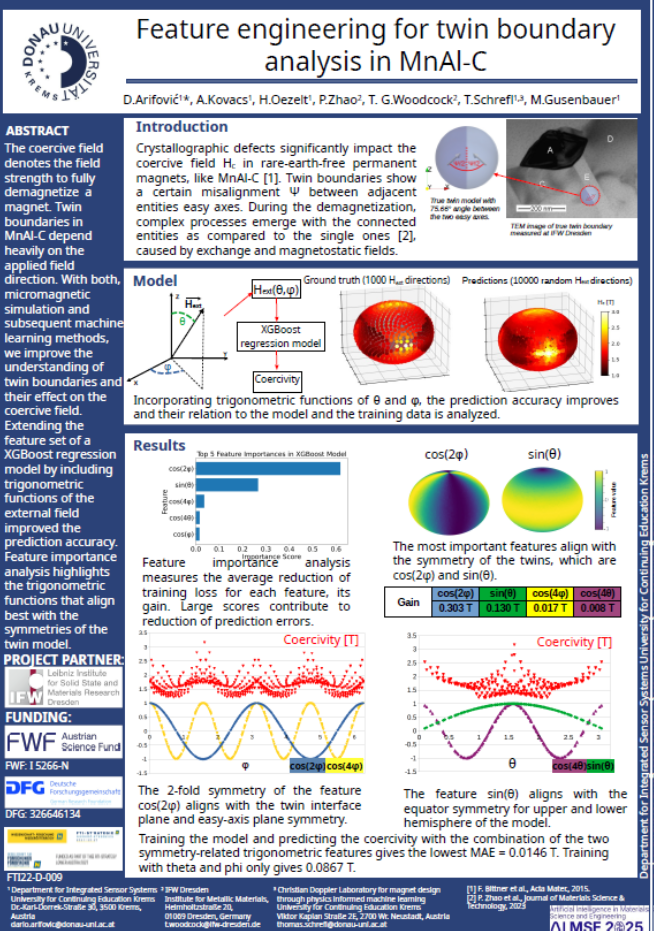
The 2nd Conference on Artificial Intelligence in Materials Science and Engineering (AI MSE 2025) is taking place from 18 to 19 November 2025 in Bochum. Dario Arifović is contributing with a poster entitled: “Feature engineering for twin boundary analysis in MnAl-C”. The poster is presented on the virtual conference platform as well as on-site with an additional poster pitch presentation.
The Joint European Magnetic Symposia (JEMS2025) took place in Frankfurt from August 24 to 29. Researchers from around the world presented their latest findings. We gave two presentations at the conference.

Dario Arifović gave a talk with the title “Feature importance and relation to defect symmetry in MnAl-C” and Markus Gusenbauer presented “Micromagnetic simulations of demagnetization processes at intersecting antiphase and true twin boundary in MnAl-C”.
From May 21st to 22nd 2025, Markus Gusenbauer, Alexander Kovacs, and Harald Özelt participated in the international workshop “Permanent Magnet Materials in the Making” at the Erich Schmid Institut (ESI) in Leoben, Austria. The event brought together researchers from Austria, Germany, Italy, Slovenia, and Spain to exchange insights on the latest developments in permanent magnet materials and explore future collaboration opportunities. In addition to project presentations and discussions, participants were also introduced to the card-based method as a tool for interdisciplinary engagement. Many thanks to the organizers, Andrea Bachmaier (WPI c/o ESI, ÖAW) and Erika Faigen (University of Vienna), for fostering such a productive and inspiring environment!

In 2025 we will show our research results at several conferences. We submitted 2 abstracts to the Joint European Magnetic Symposia (JEMS) 2025, which will be held in Frankfurt from August 24 to 29. Dario Arifović will contribute with the work: “Feature importance and relation to defect symmetry in MnAl-C” and Markus Gusenbauer will talk about “Micromagnetic simulations of demagnetization processes at intersecting antiphase and true twin boundary in MnAl-C”. From November 18 to 19 we will contribute at the Conference on Artificial Intelligence in Materials Science and Engineering (AI MSE 2025) in Bochum. The work with the title: “Feature engineering for twin boundary analysis in MnAl-C” will be presented by Dario Arifović.
From September 15th to 18th 2024, the 21st International IGTE Symposium 2024 on Computational Methods in Electromagnetics and Multiphysics took place in Graz, Austria. Markus Gusenbauer participated in the Minisymposium on Micro-to Macroscopic Hysteresis Modeling and gave a presentation titled Machine Learning-Enhanced Modelling of Large Magnetic Systems. He demonstrated the feasibility of using machine learning to investigate experimentally measured material samples. By overcoming the length scale limitations of micromagnetic simulations, macroscopic hysteresis properties can be acquired in the sub-millimeter regime. Local coercivity is predicted using a pre-trained machine learning model. Combined with computed interaction fields and an analytically determined reversible part using the Stoner-Wohlfarth model, the macroscopic demagnetization curve can be calculated.

Stefan Stanciu is presenting the work on “Machine Learning assisted interface analysis in MnAl-C” at the Materials Science and Engineering Congress 2024 (MSE2024), which is held in Darmstadt from 24th to 26th September, 2024. In this study, we leverage a comprehensive database comprising results from numerous simulation runs across a variety of crystallographic twin scenarios. Our findings indicate that unless the dataset dimension is reduced to less than 10% of the original size, there is no significant deviation in the output. This means, that it is possible to investigate only a few external field directions with respect to the twin boundary interface, to obtain a full description of the coercive field distribution of particular twin interfaces. For more details click to see the full abstract .
Our recent research has been submitted to the Journal of Magnetism and Magnetic Materials with the title: “Micromagnetic study of grain junctions in MnAl-C containing intergranular inclusions”. In this work we quantified coercivity in single and multigrain systems of MnAl-C with embedded paramagnetic and soft magnetic inclusions. On the 3rd of July we presented the work (Link: poster_ICM_gusenbauer.pdf) at the International Conference on Magnetism 2024 (ICM2024) in Bologna.
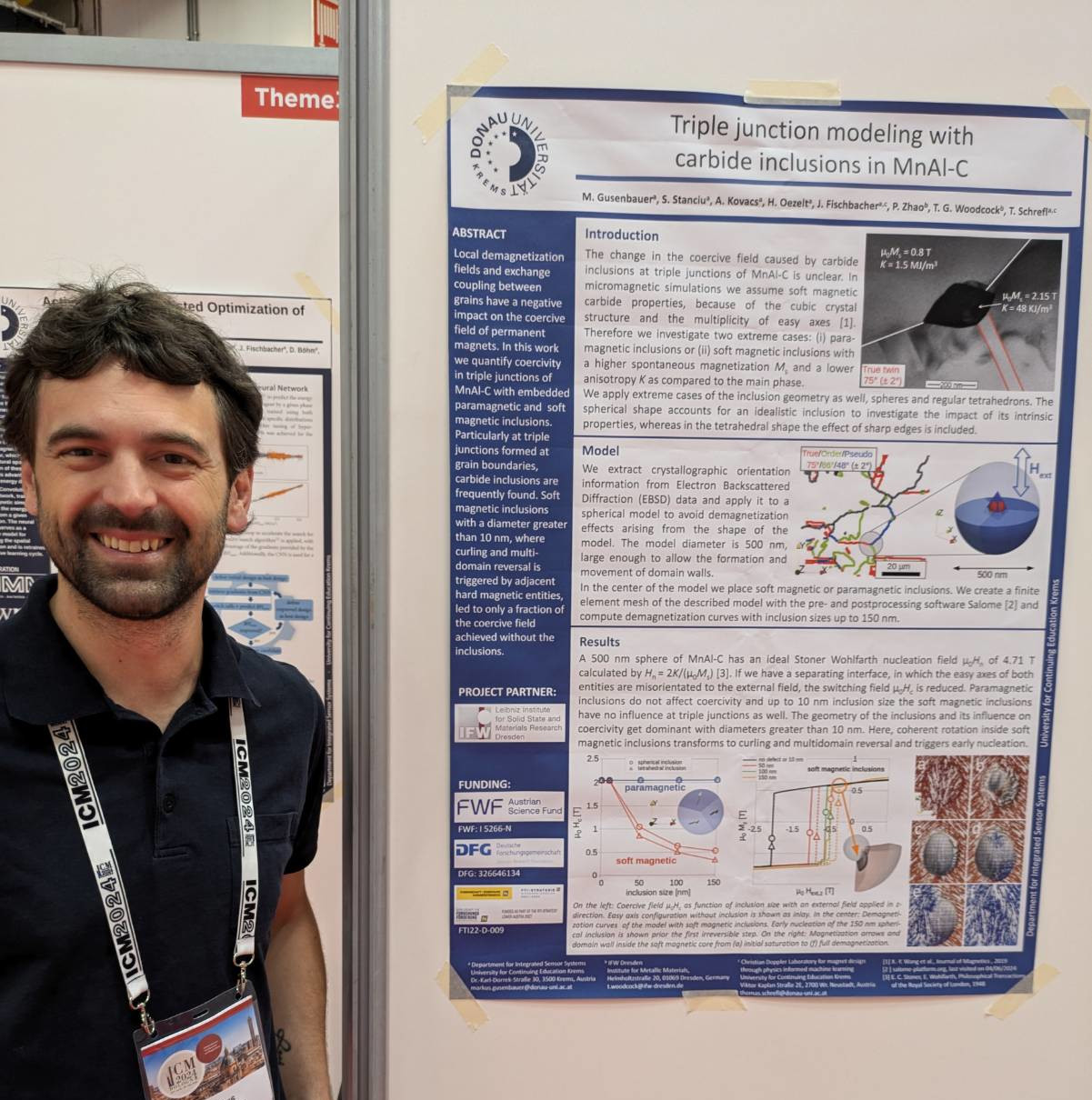
On May 24, 2024 from 17:00 to 23:00, the Long Night of Research took place throughout Austria. At the University for Continuing Education Krems we were represented with the topic: "Clean technologies thanks to artificial intelligence: Who can find the strongest magnet?". The guests were able to actively participate in the research by drawing different phase distributions and crystal structures of magnets. A trained AI evaluated the drawings and predicted the performance of the magnets. In the discussion, we were able to demonstrate the necessity of magnetic research in a wide range of topics for a sustainable and climate-friendly energy transition.
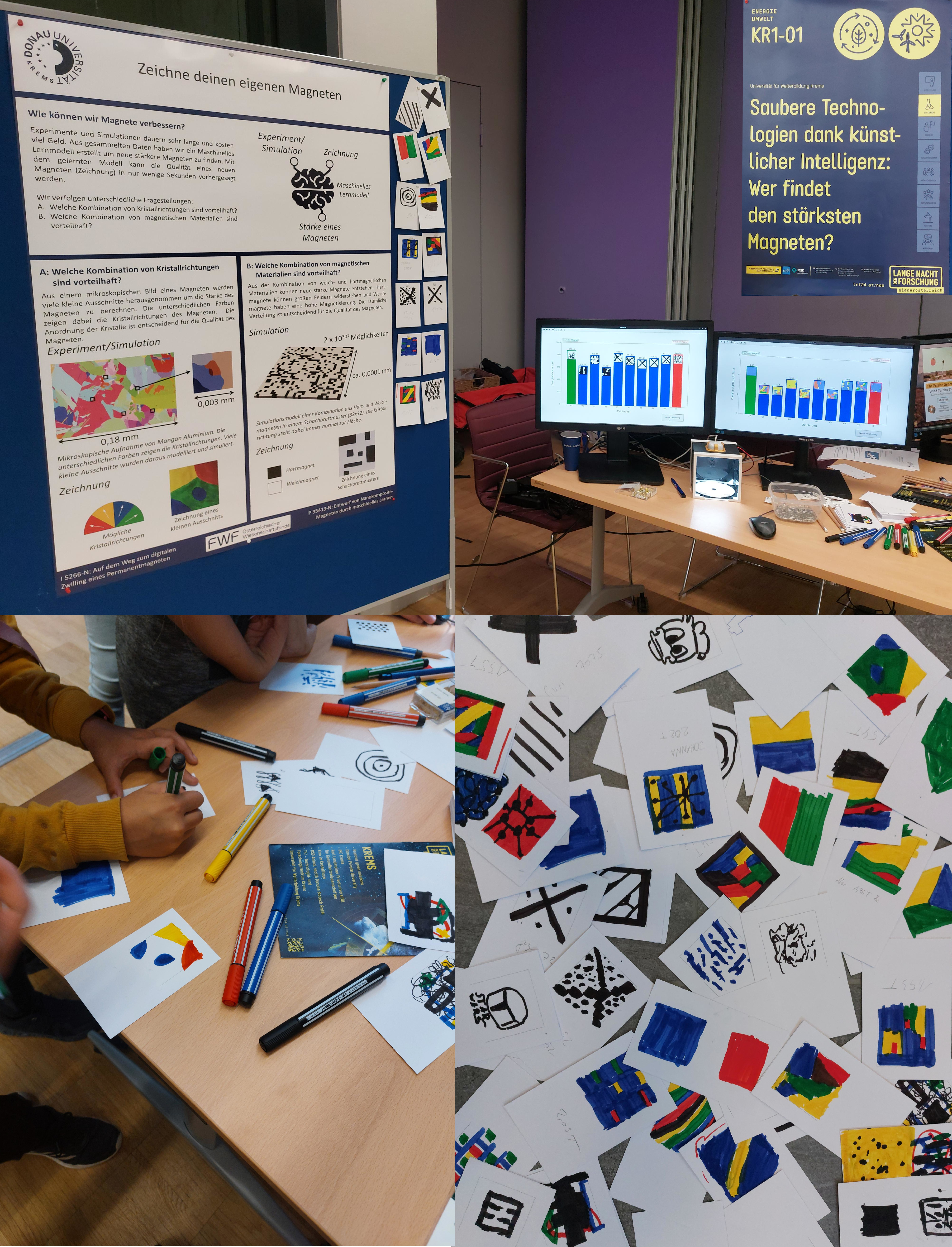
The 13th International Symposium on Hysteresis Modeling and Micromagnetics (HMM 2023) was held in Vienna from June 4-7, 2023 (www.asc.tuwien.ac.at/hmm2023). For the project, Markus Gusenbauer presented a poster entitled “Magnetization reversal of large granular magnetic materials”. The symposium was represented by numerous experts in the field of micromagnetism. There was a lively exchange to share new knowledge and exchange ideas.
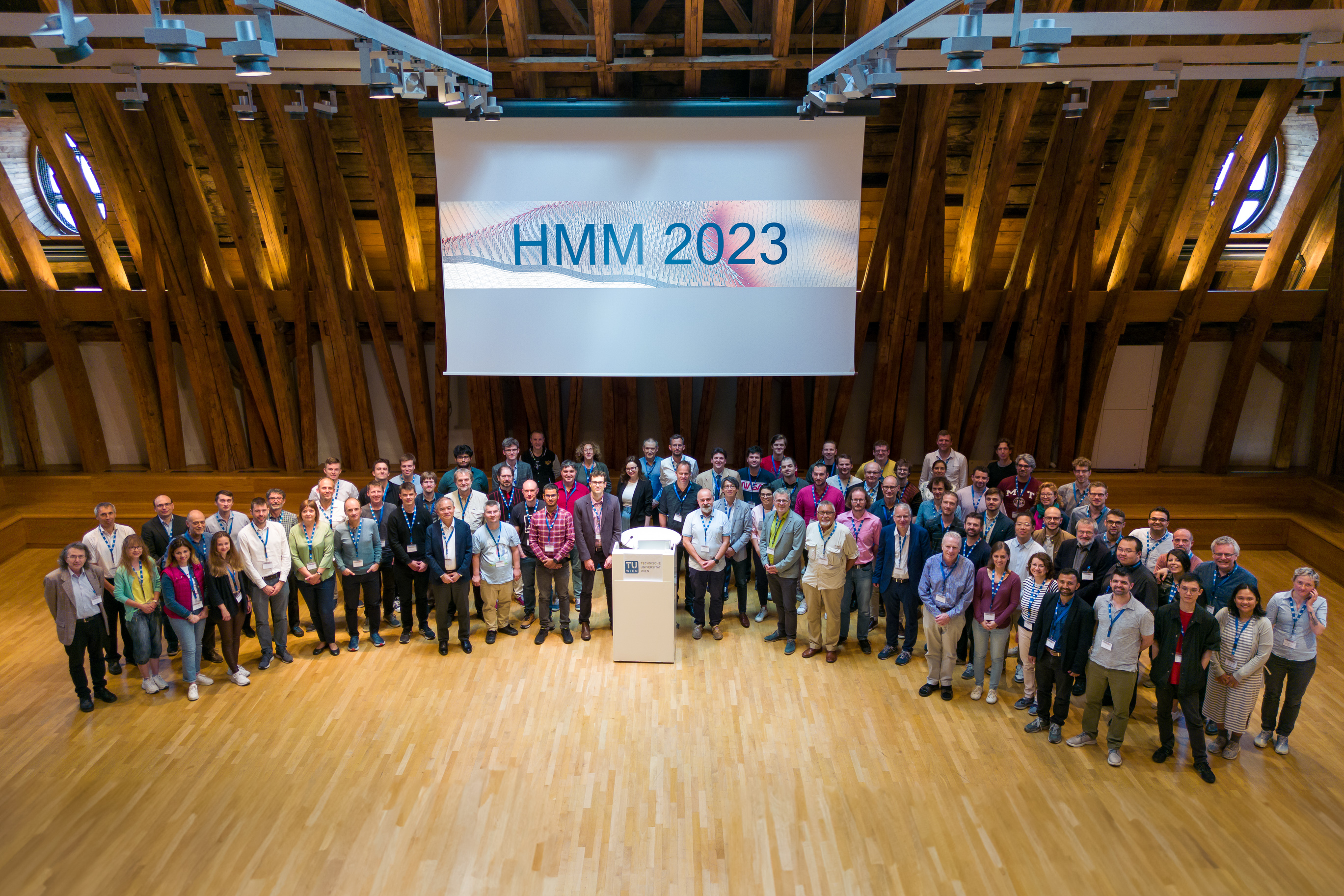
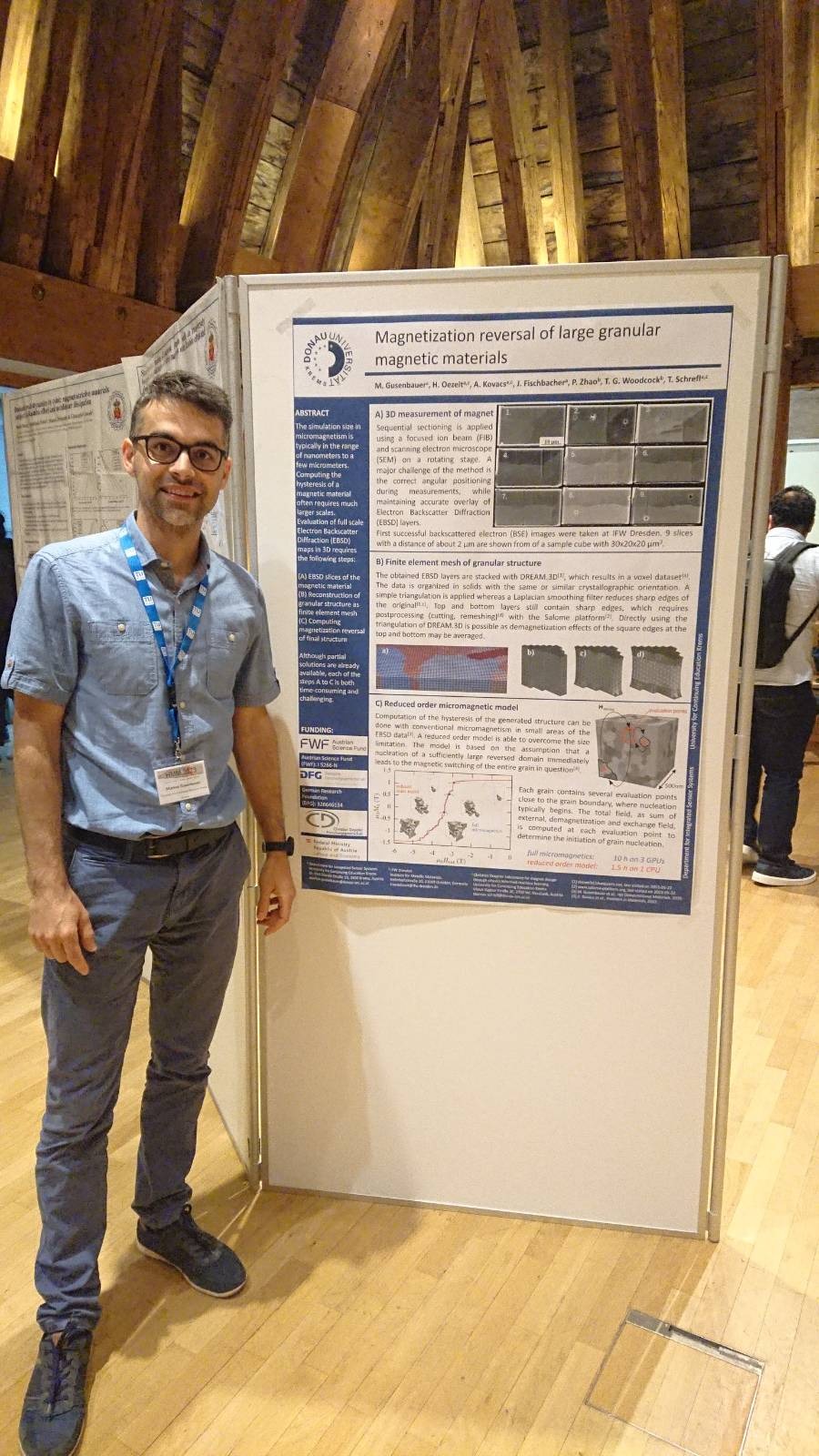
On May 11, 2023, the talk "Multiscaling strategies in computational magnet design" was presented at the "Going Green CARE INNOVATION 2023" in Vienna (www.careinnovation.eu) . Thereby parts of the project could be presented to a larger audience. The program included the latest developments in circular economy, clean production, resource efficiency, climate change and much more, presented by leading experts from industry, academia and the public sector from around the world. The talk was presented as part of a joint workshop titled "Interdisciplinary team up to escape the rare earth trap." The team consists of the Erich Schmid Institute of Materials Science of the Austrian Academy of Sciences in Leoben, the Johannes Kepler University Linz and the University for Continuing Education Krems. The idea of the workshop was the connection of material scientists, engineers and social scientists to gain benefit from interdisciplinary collaborations for finding the most sustainable solutions for magnetic material design.
Online recording of the full workshop
On August 31, 2022 Harald Özelt gave a talk at CMAM 2022 (Computational Methods in Applied Mathematics) in Vienna. The title of the talk was: "Machine learning as building block for macromagnetic simulations".
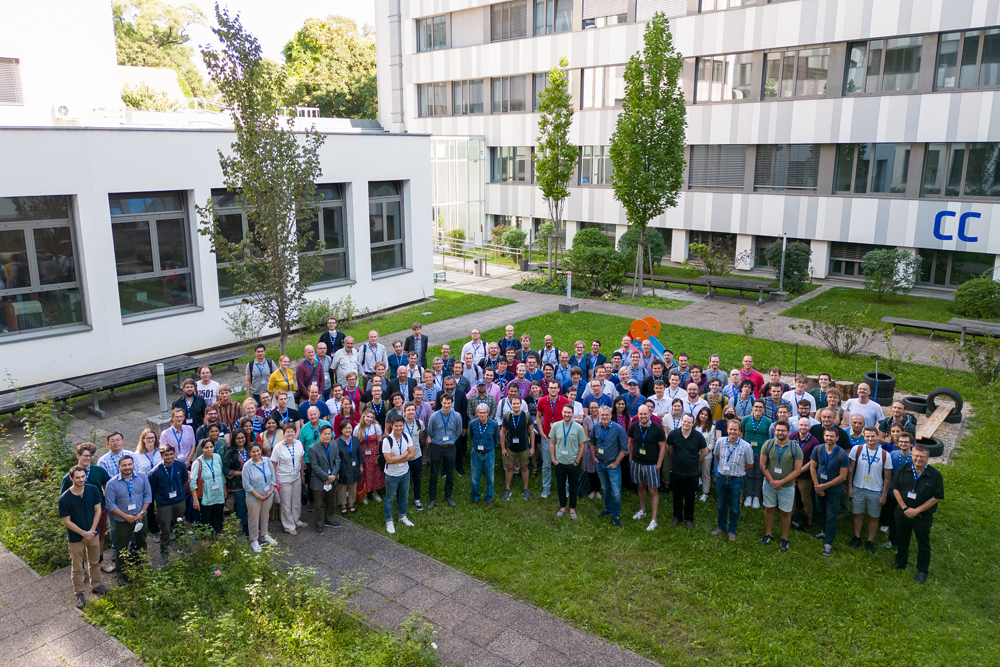
Markus Gusenbauer gave a talk at JEMS2022 on July 26, 2022 entitled: "Coercivity analysis of twin boundaries". The talk was virtually shown at the hybrid event in Warsaw, Poland (https://jems2022.pl).
On July 13, 2022, we organized a workshop at the Junge Uni on the Krems campus. Children between the ages of 10 and 13 learned about how an electric motor works. They were able to make a small electric motor and experience how the strength of a magnet affects the power of a motor. Thomas Schrefl, Harald Özelt and Markus Gusenbauer were the supervising researchers at the workshop.
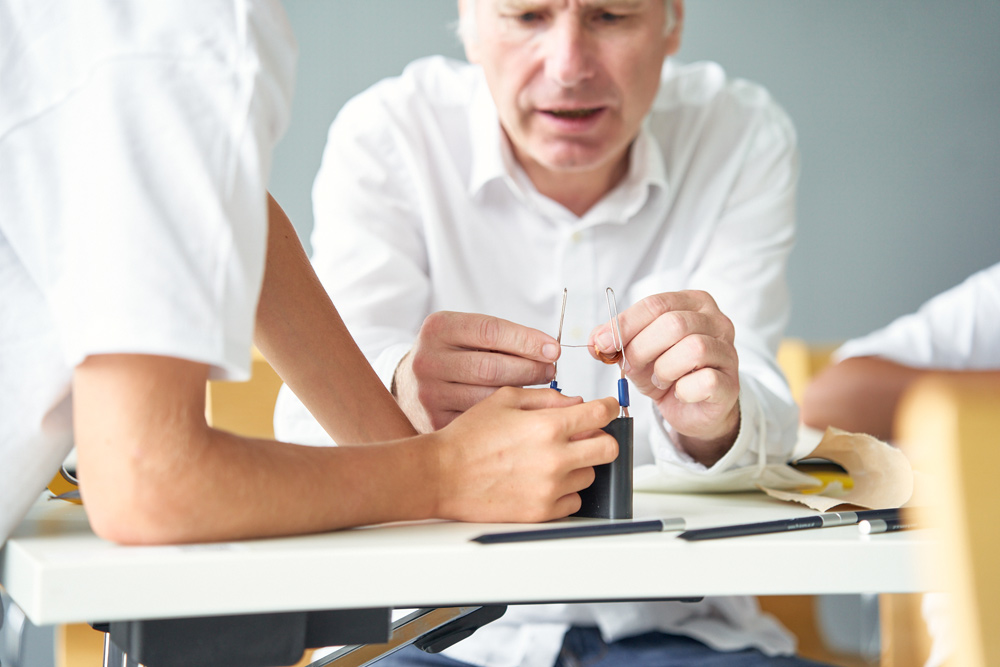
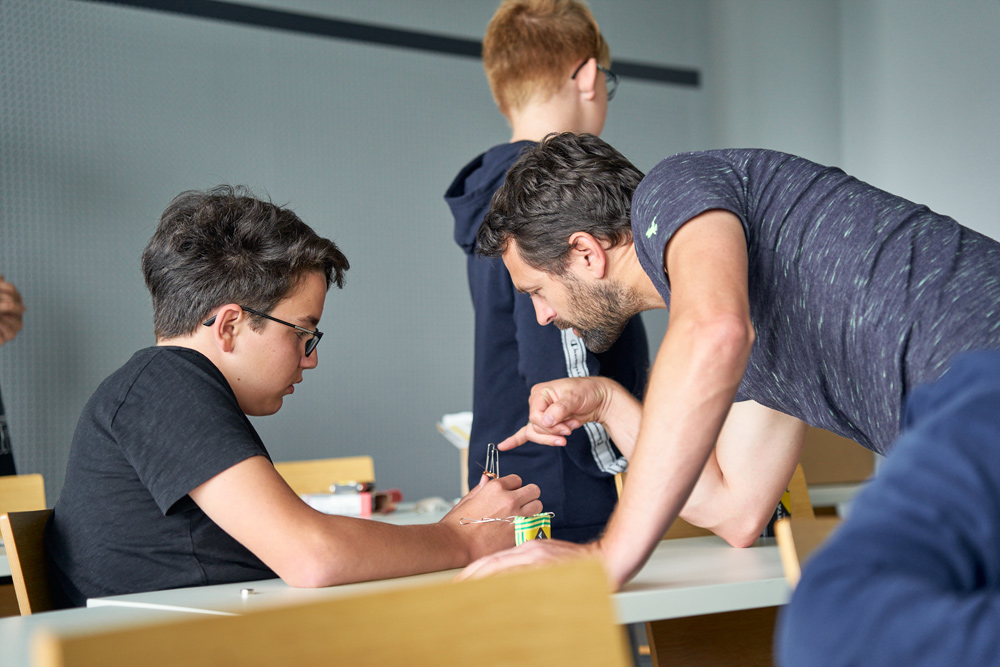
Our joined publication is available online from July 6th, 2022:
Panpan Zhao, Markus Gusenbauer, Harald Oezelt, Daniel Wolf, Thomas Gemming, Thomas Schrefl, Kornelius Nielsch, Thomas George Woodcock; Nanoscale chemical segregation to twin interfaces in τ -MnAl-C and resulting effects on the magnetic properties, Journal of Materials Science & Technology (2022)
Abstract:
In this study, aberration-corrected scanning transmission electron microscopy coupled with electron energy-loss spectroscopy (STEM-EELS) was used to investigate the atomistic structure and chemical composition of true twin and order twin boundaries in ferromagnetic τ-MnAl-C. True twins and order twins were distinguished based on the diffraction patterns using TEM. No elemental segregation was observed at the coherent true twin boundary but some Mn enrichment within a region of about 1.5-2 nm was found at the incoherent true twin boundary. A transition region with Mn enrichment about 4-6 nm wide was found at the order twin boundary. A carbon cluster with a size of around 5 nm was also found at the twin boundary. Micromagnetic simulations were conducted to study the effect of this chemical segregation at twin interfaces on the magnetic properties. The results showed that the coercivity tends to increase with increasing structural and chemical disorder at the interface.
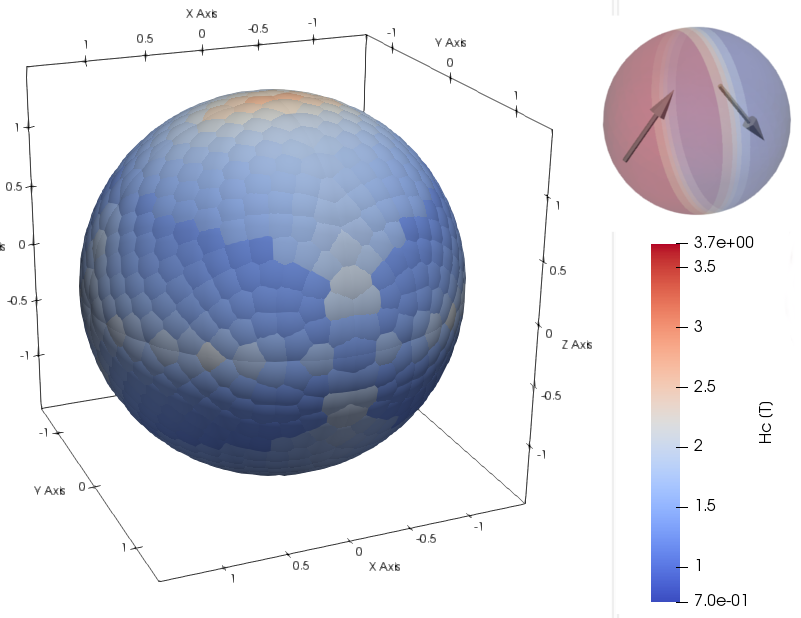
Bild: coherent_true_twin_compact.png (© UWK Markus Gusenbauer)
Switching field Hc visualized on a globe unit sphere of a true twin model. Each colored spot represents the switching field Hc of a simulation with the respective unique external field direction. The simulation model with the respective easy axes and the segregation layers are shown in the top right corner.
On May 20, 2022. we were able to inspire young and old at the Long Night of Research 2022. The influence of permanent magnets on electromobility was demonstrated at a hands-on station. Those interested were able to find out how magnets influence the performance of electric motors with simple experiments. With our project we were able to show how important it is to develop permanent magnets without critical rare earths materials.
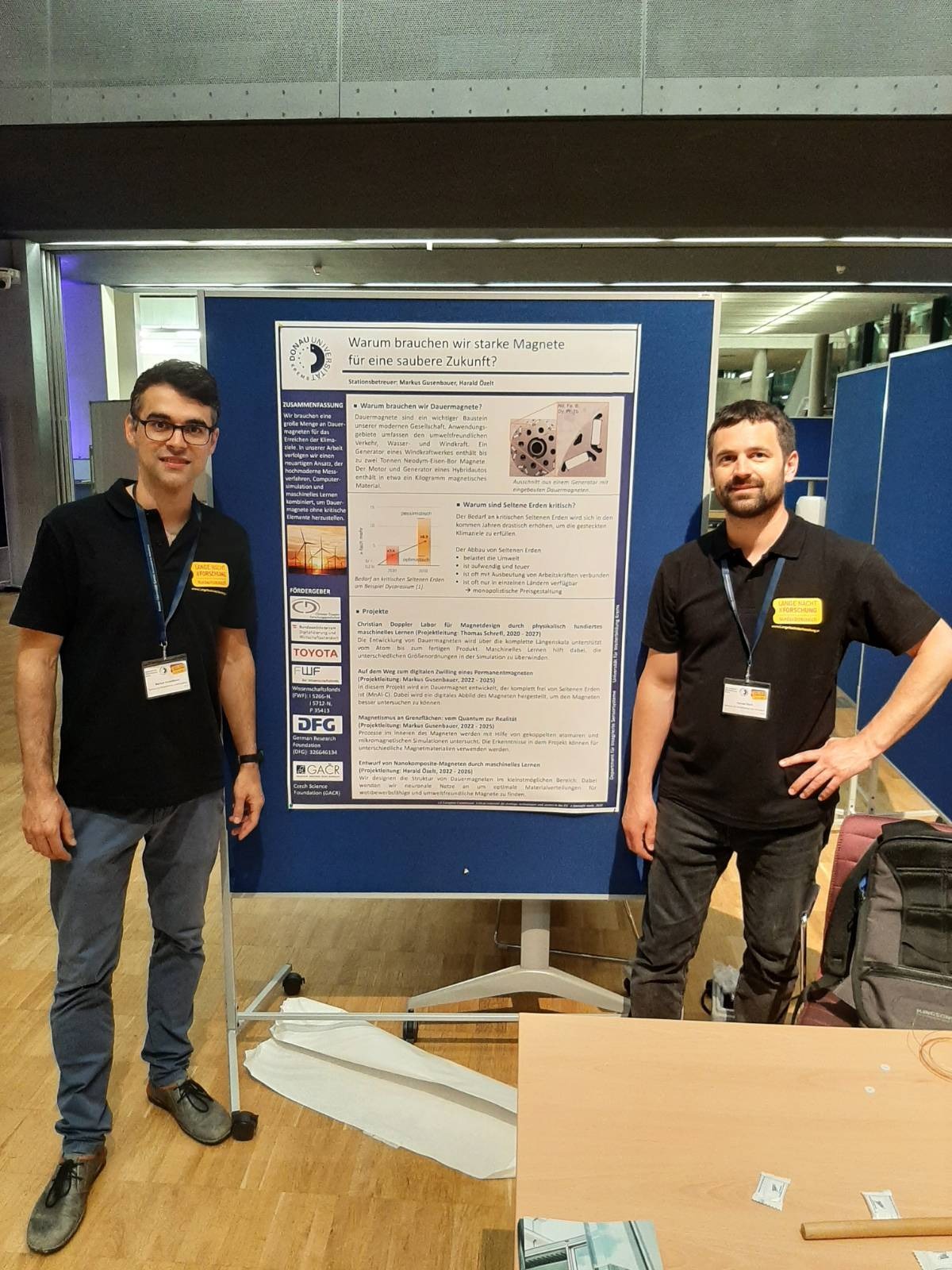
https://www.donau-uni.ac.at/de/aktuelles/veranstaltungen/2022/lange-nacht-der-forschung-2022.html
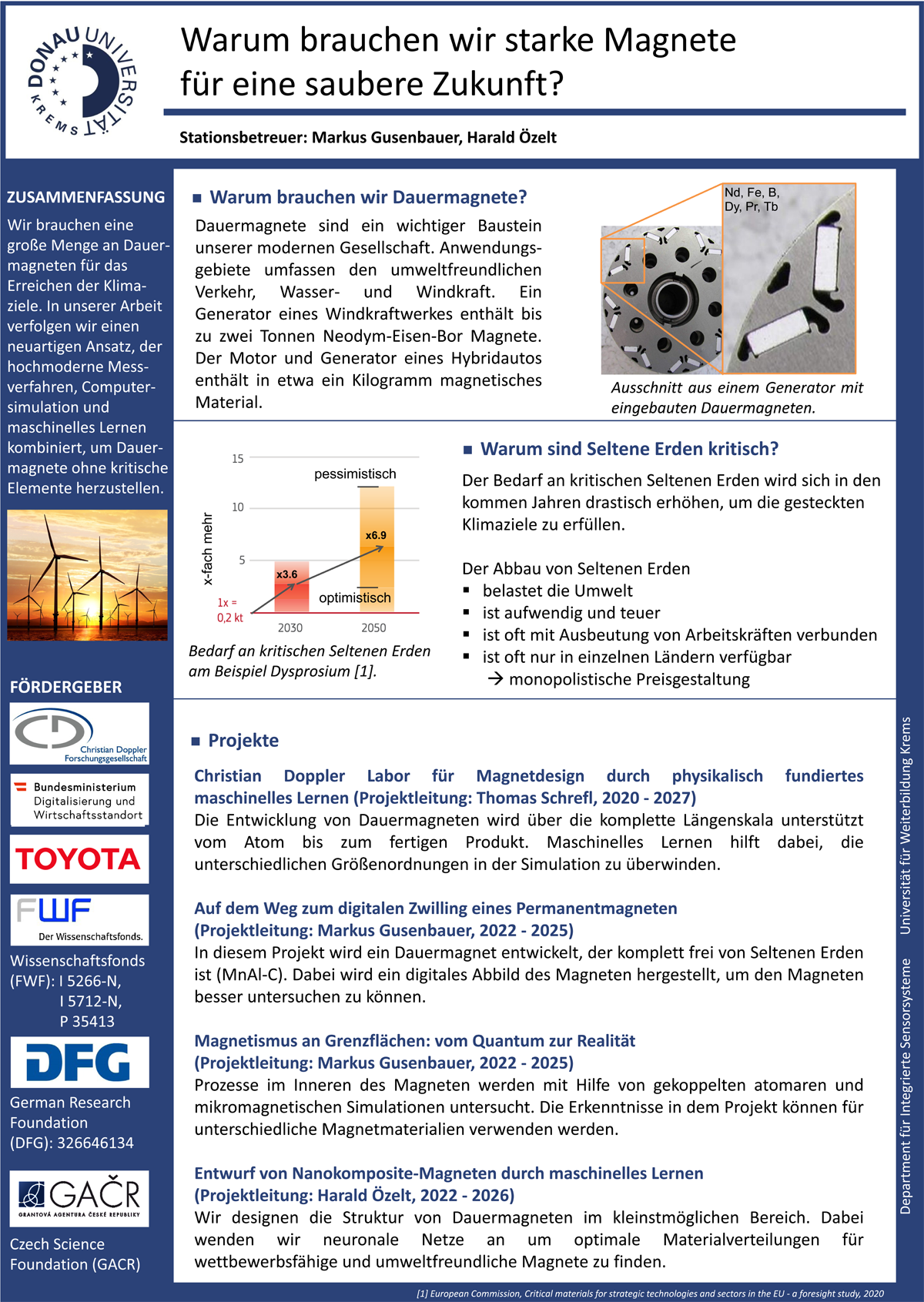
On 25.4.2022 the first virtual kick-off meeting took place. Participants from IFW Dresden were Thomas G. Woodcock and Panpan Zhao. From UWK Krems Thomas Schrefl, Harald Özelt and Markus Gusenbauer participated. The main topic was the discussion about the next steps, prioritization of the work plan, all with focus on the upcoming project period. In WP1 and WP2 at IFW Dresden, we are now working on ways to generate 3D information on grain structures and to analyze material segregation of individual types of interfaces, such as triple junctions. In WP4, the micromagnetic part at UWK, the individual interfaces are analyzed with distributions of coercivity. In parallel, we will work on a toolchain to convert 3D microstructure measurements into simulation models. Grain structure statistics will help to generate artificial microstructures similar to the experimental measurements.
@ Details:
Auftraggeber:
FWF, Projekt: I 5266-N

Details
| Duration | 01/03/2022 - 28/02/2026 |
|---|---|
| Funding | FWF |
| Program | |
| Department | |
| Principle investigator for the project (University for Continuing Education Krems) | Dipl.-Ing.(FH) Dr. Markus Gusenbauer |
Publications
Gusenbauer, M.; Stanciu, S.; Kovacs, A.; Oezelt, H.; Fischbacher, J.; Zhao, P.; Woodcock, T. G.; Schrefl, T.; Stanciu S. (2024). Micromagnetic study of grain junctions in MnAl-C containing intergranular inclusions. Elsevier Journal of Magnetism and Magnetic Materials, Vol. 606: 172390
Zhao, P.; Gusenbauer, M.; Oezelt, H.; Wolf, D.; Gemming, T.; Schrefl, T.; Nielsch, K.; Woodcock, T. G. (2023). Nanoscale chemical segregation to twin interfaces in t -MnAl-C and resulting effects on the magnetic properties. Journal of Materials Science & Technology, Vol. 134: 22-32
Gusenbauer, M.; Oezelt, H.; Kovacs, A.; Fischbacher, J.; Zhao, P.; Woodcock, T.-G.; Schrefl, T. (2023). Magnetization reversal of large granular magnetic materials. In: HMM, proceedings in 13th International Symposium on Hysteresis Modeling and Micromagnetics (HMM 2023): 1, HMM, Wien
Zhao, P.; Gusenbauer, M.; Oezelt, H.; Wolf, D.; Gemming, T.; Schrefl, T.; Nielsch, K.; Woodcock, T. G. (2022). Nanoscale chemical segregation to twin interfaces in t-MnAl-C and resulting effects on the magnetic properties. Journal of Materials Science & Technology, Vol. 134: 22-32
Lectures
Feature engineering for twin boundary analysis in MnAl-C
RICAM Magnetic Material Modelling, 26/11/2025
Feature engineering for twin boundary analysis in MnAl-C
AI MSE 2025, 18/11/2025
Feature importance and relation to defect symmetry in MnAl-C
JEMS2025, 27/08/2025
Micromagnetic simulations of demagnetization processes at intersecting antiphase and true twin boundary in MnAl-C
JEMS2025, 27/08/2025
Machine Learning assisted interface analysis in MnAl-C
MSE 2024, 25/09/2024
Machine Learning-Enhanced Modelling of Large Magnetic Systems
IGTE Symposium 2024, 18/09/2024
Triple junction modeling with carbide inclusions in MnAl-C
International Conference on Magnetism, 03/07/2024
Magnetization reversal of large granular magnetic materials
HMM 2023, 05/06/2023
Multiscaling strategies in computational magnet design
Going Green – CARE INNOVATION 2023, 11/05/2023
Machine learning as building block for macromagnetic simulations
CMAM 2022, 31/08/2022
Coercivity analysis of twin boundaries with demagnetization negligible models in arbitrary field direction
JEMS 2022, 26/07/2022

